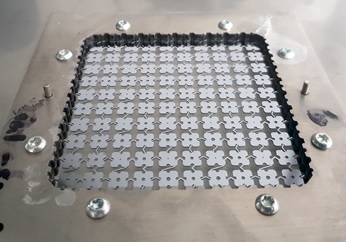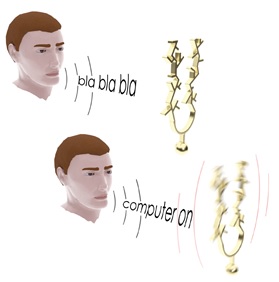1 Passive speech recognition and signal processing
Modern machines are capable of constantly monitoring their environment, and to react intelligently to relevant stimuli. Perhaps the most remarkable example of this capability are voice-activated gadgets, that turn on when the user says a particular wake-up phrase. Currently, these devices work by digitising sound waves, and running algorithms to determine if the wake-up phrase has been said. This approach consumes energy at all times, even when no event is taking place. As a consequence, devices have lower battery duration, increased weight, and operate in an environmentally-unfriendly way.
At the hypersmart matter group, we build devices that can recognise spoken commands without consuming any stand-by energy. We accomplish this by using mechanical resonances. Inspired by tuning forks that vibrate when excited at the resonance frequency, but not at others; we build mechanical neural networks, ’brains’ of resonators that vibrate only when excited with a particular spoken word but not others. This unique ability comes from the fact that mechanical vibrations have very little energy dissipation. The low dissipation gives ‘mechanical brains’ the very long memory necessary to recognise complex acoustic patterns without requiring a power supply.
A mechanical neural network is a prodigiously complex device. To be able to design and model such devices, we combine nonlinear finite elements, dynamic substructuring, reduced-order modelling and artificial intelligence. Our devices are fabricated using micromachining technology on silicon and silicon nitride. The excellent in-house cleanroom at AMOLF allows us to immediately prototype and test new ideas.


Hypersmart [word-selective] tuning fork (Left) and network of mechanical resonators (right)


